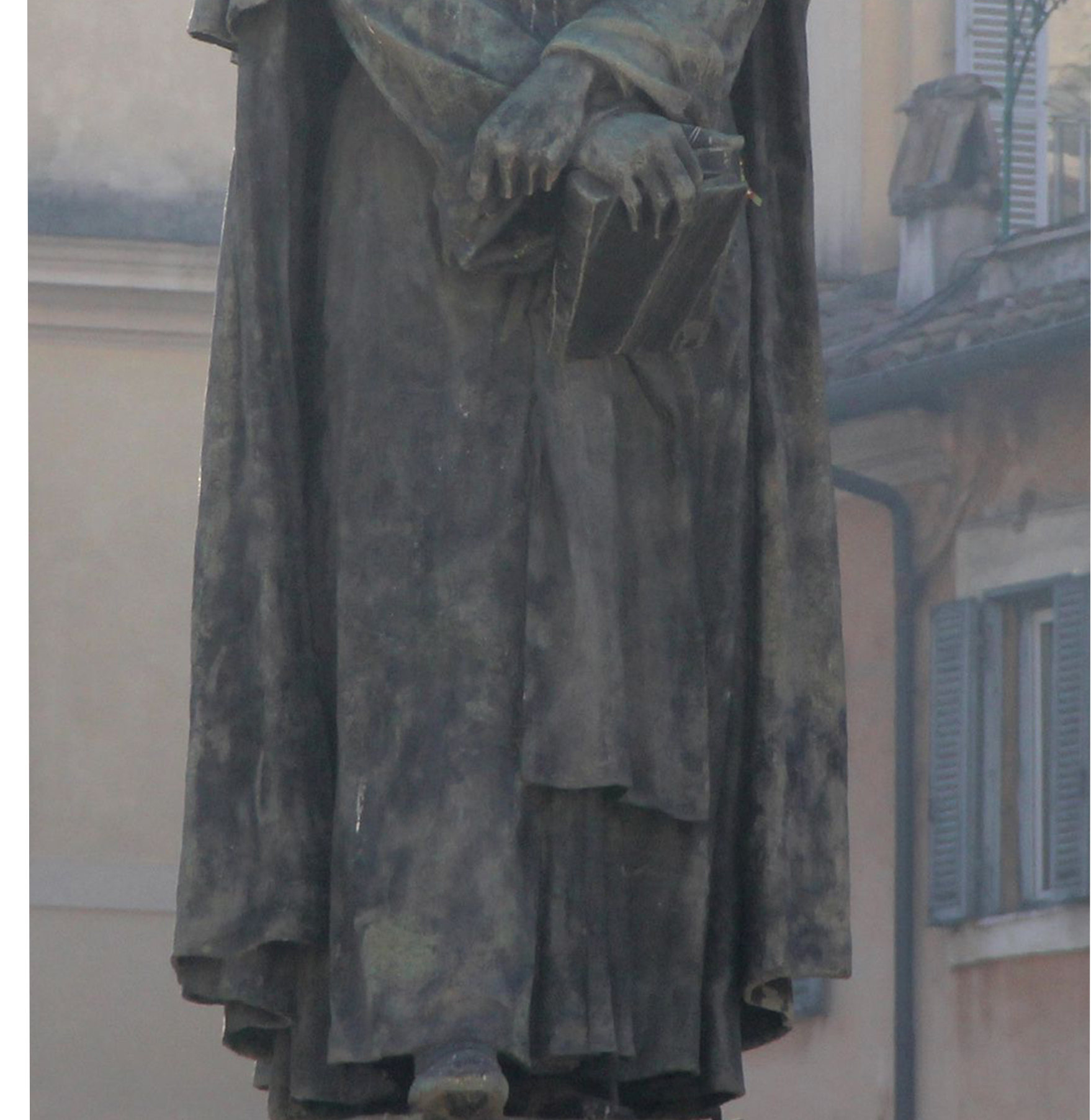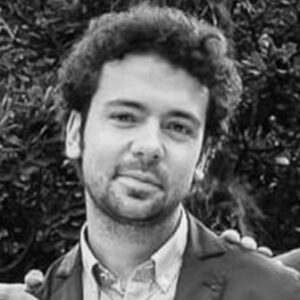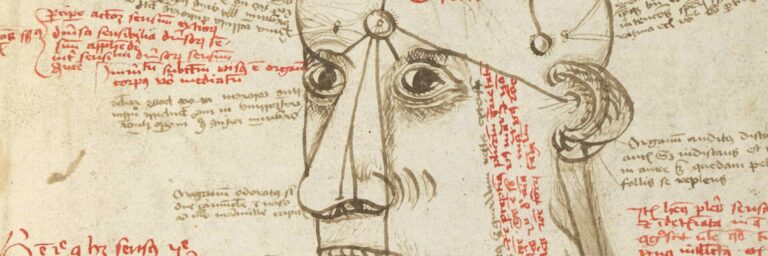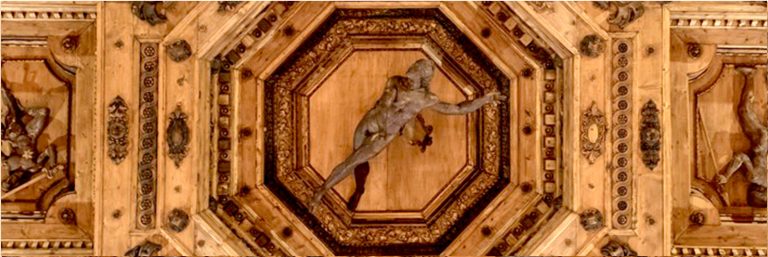Giordano Bruno’s Minima


FORMA FLUENS
Histories of the Microcosm
Giordano Bruno’s Theory of Minima and the Concept of Measurable Magnitude
A Research Report
Paolo Rossini
Normale University Pisa
Santorio Fellow

In Bruno’s thought, mathematics and philosophy cannot be separated from each other. For an interpreter, this entails the impossibility to comprehend Bruno’s mathematical reasoning without a prior understanding of his metaphysics, as well as of his overall philosophical project. This has also determined how Bruno’s mathematics has been approached in recent years.
The earlier interpreters (Olschki, Koyrè) have opted for a strictly mathematical viewpoint, which has mainly highlighted the inconsistencies of Bruno’s mathematics. In the last decades, instead, a more philosophical approach has prevailed, thanks to the studies conducted mainly by Aquilecchia, Boenker-Vallon, Muslow, De Bernart, Luethy, Seidengart and Matteoli. Generally speaking, these studies have assessed Bruno’s mathematics by placing it against its historical and philosophical background. This research project is designed to reach the same objective. It is structured in three parts.
The first part deals with the way in which Bruno’s mathematics is related to that of his contemporaries. In particular, I consider two di erent conceptions of mathematics which emerge in the sixteenth century. The first conception is that resulting from the quaestio de certitudine mathematicarum. The second conception is that developed within the Ramist circle. Both these conceptions are informed by a vivid debate on the role and the epistemological status of mathematics, as well as on the ontological nature of mathematical beings. Philosophy of mathematics, so to say, is a ma er of dispute for Bruno as well. Hence, I argue that this debate might be also extended to Bruno’s mathematics, allowing thereby for a comparison among three, different, contemporary positions: Bruno’s, Ramist, and that related to the quaestio. To this extent, this comparison would permit to place Bruno into the historical context of sixteenth century mathematics.
The second part of my research is devoted to the sources of Bruno’s mathematics. As has already been proved, Bruno mainly relies on Euclid and Proclus. Also Plotinus’s On Numbers can be regarded as a primary source of Bruno’s mathematics. In addition, Bruno reframes insights taken from the works of Cusanus, Bovelles and Boethius. Insofar as the mathematics of Cusanus, Bovelles and Boethius is modelled after the Pythagorean teachings, the same also applies to Bruno’s mathematics.
I would like to deepen this issue of Bruno’s Pythagore-anism by taking into account another philosophical tradition, namely, Lullism. It is well known that Bruno was an expert of Llull’s doctrine. He wrote a number of Lullian works, and was deeply interested in Llull’s Ars. Accordingly, Bruno scholars have made an effort to determine the impact of Lullism on Bruno’s thought. However, in these investigations, Bruno’s mathematics has been neglected. In my research, I intend to fill this gap by comparing Bruno’s and Llull’s mathematics. This comparison confirms the above perspective on Bruno’s Pythagoreanism, for Llull’s mathematics, presents a number of Pythagorean elements, too. The goal of this first part is, then, to propose Llull as another channel through which Pythagoreanism might have come to influence Bruno’s mathematics.

Paolo Rossini is a PhD student at the Scuola Normale Superiore in Pisa. He is interested in the Renaissance and in the history of mathematics in general. His main research topic are the works of Giordano Bruno and Ramus.
The third part addresses the mathematical procedures outlined in Bruno’s works. If one reads Bruno’s De triplici minimo—in which his atomistic theory is presented from a geometrical point of view—one might have the impression that Bruno is more interested in physics, rather than in mathematics. For that reason, Bruno’s naturalism has been often taken as the reason why his mathematics is affected by a number of contradictions. For example, it remains undetermined whether for Bruno a point is extended or not; or whether the points in a line are infinite or finite. Nevertheless, in some other writings—namely, the four dialogues on the proportional compass invented by Fabrizio Mordente—Bruno seems truly interested in solving mathematical problems, such as the quadrature of the circle. To this end, he makes use of mathematical procedures which I aim to analyze, in order to assess their applicability.
Bruno's Concept of Measurable Magnitude: An Outline
As is known, early modern science was characterized by an increasing tendency toward quantification. Gradually, quantitative measurements entered all scientofic disciplines, ranging from physics to medicine and biology. What is less known, however, is that the concept of measurable magnitude was introduced into geometry only in the sixteenth century. Indeed, in classical Greek mathematics magnitudes were not strictly measurable nor operable. That said, much remains to be learned about the concept of measurable magnitude and how it is related to the quantification of science. Such an analysis would shed light on the complex interplay between advancements in early modern mathematics and the scientific revolution.
A remarkable attempt to introduce measurability into geometry was made by Giordano Bruno with his theory of minima, whose mathematical and philosophical underpinnings I explored in the paper I gave at the conference in Pisa. With his theory of minima, Bruno aimed to provide a universal theory of measurement in accordance with his view that “nature is a numerable number and a measurable magnitude.” To this end, he designed the concept of indivisible minimum to serve as unit of measurement for all magnitudes. More precisely, Bruno conceived magnitudes as made up of minima, composing thereby the geometrical continuum out of indivisible parts. Hence, theory of minima (and the related concept of measurable magnitude) pre- supposed an atomistic view of geometrical objects. In my paper, I have outlined this atomistic background, and showed some examples of how Bruno employs the notion of minimum to cope with problems of measurement.




